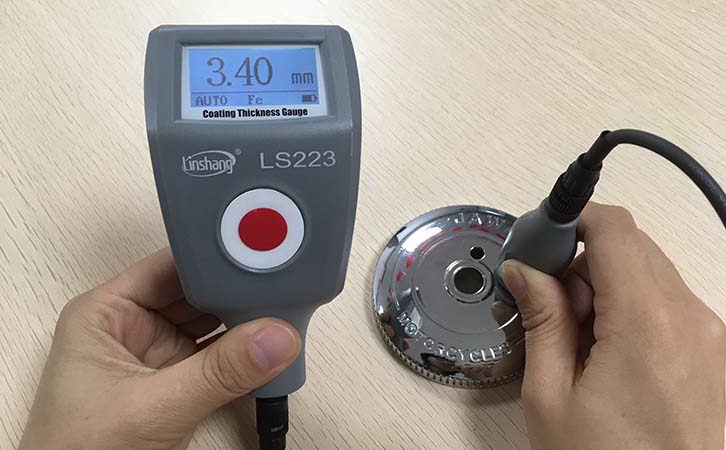How to Select Coating Thickness Gauge?
The measurement base and accuracy of different coating thickness gauges are not the same. Therefore, when selecting a coating thickness gauge, you need to choose a suitable coating thickness gauge according to the actual situation.
1. Select the appropriate coating thickness gauge according to the measurement principle and measurement accuracy
(1) Magnetic thickness measurement method: This method has high measurement accuracy and is generally used to measure the thickness of magnetically permeable and non-magnetically permeable materials.
(2) Eddy current thickness measurement method: suitable for non-conductive layer thickness measurement on conductive metal. This method is less accurate than magnetic thickness measurement method.
(3) Ultrasonic thickness measurement method: This method has a low usage rate and low measurement accuracy and is suitable for the measurement of the thickness of multilayer coatings.
(4) Electrolytic thickness measurement method: This method is different from the above methods. It needs to destroy the coating of the workpiece to be measured during measurement. The measurement process is very complicated. Therefore, in many cases where the coating needs to be retained , it is not applicable.
(5) Radiometric method: Generally, this method is only used under very special conditions and the cost of this method is high.
2. Select a coating thickness gauge according to the thickness of the material
After understanding the measurement accuracy and principle of different coating thickness gauges to help us choose the right type, the next step is to look at the specific performance indicators of coating thickness gauges. In general, the coating thickness does not exceed 1000 microns and most coating thickness gauges can meet this condition. However, if the precision of the coating thickness of the workpiece is high and the coating thickness is thin, it is best to choose a coating thickness gaugeimported from a small range. If the coating is relatively thick, a wide range coating thickness gauge should be selected.

3. Select the appropriate coating thickness gauge with probe according to the size of the measuring tool
If the workpiece is relatively small, you need to choose a thickness measuring instrument with a micro-probe. The micro-probe diameter of coating thickness gauge has an outer diameter of only 5 mm and the measuring part of the probe is smaller. The area with a diameter of at least 2 mm can be measured. For small pipe inner walls and other workpieces, not only a miniature probe, but also a 90 ° or 45 ° angle probe can be selected to make the measurement more accurate.
In short, according to the principles of different coating thickness gauges, measurement accuracy, measurement range and application, comprehensive consideration of targeted choices can be used to select a suitable coating thickness gauge. While improving work efficiency, it can create more value for the enterprise.
- High precision coating thickness gauge for used car
- Automotive paint protection films coating thickness gauge
- Plating Thickness Measuring Instrument for Detecting Anti-corrosion Coating
- Linshang LS220, LS191, LS160A– Necessary for Car Cover Inspection
- Coating Thickness Gauge for Second Hand Vehicle
- Zero Adjustment Step of Coating Thickness Gauge